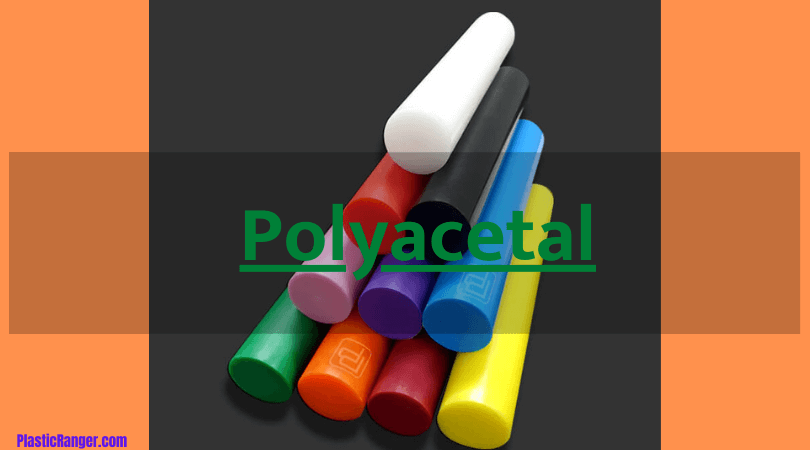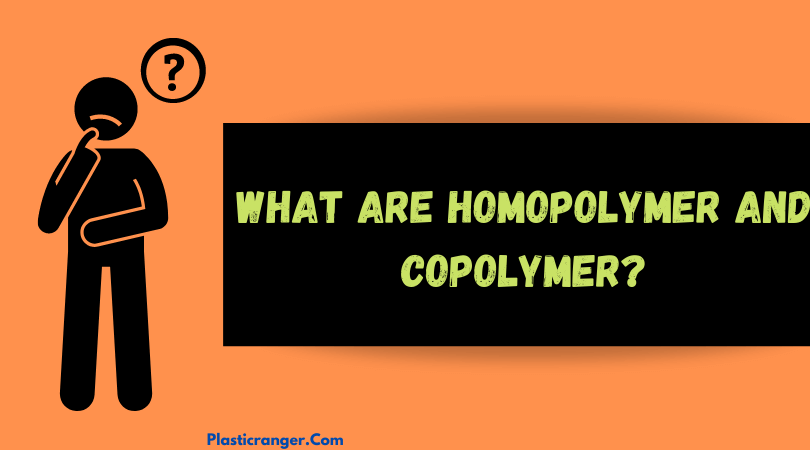What is Acetal Polymer?
Acetal, better known as POM plastic or polyoxyethylene, or sometimes polyacetal, is a semi-crystalline thermoplastic material containing a sophisticated functional group of carbon bonded to two -OR groups. It is highly favored by manufacturers worldwide because of its high mechanical strength, rigidity, and 100% recyclability.
POM belongs to the formaldehyde family with polymethylene glycol, polyoxymethylene glycol, and polyformaldehyde.
POM is an ideal thermoplastic for producing products with high dimensional stability and slithering properties. It is also suitable for metal replacement, thanks to its phenomenal blend of mechanical and chemical properties.
What are Homopolymer and Copolymer?
POM materials or resins are produced by the traditional method of polymerization of purified formaldehyde [CH2O]. Homopolymer and Copolymer two different variations of POM having different properties and applications from each other.
Comparison: Acetal Homopolymer and Copolymer
Acetal homopolymer is produced by anhydrous, monomeric formaldehyde, polymerized by anionic catalysis in an organic liquid reaction medium. The produced polymer will need immediate stabilizing by acetic anhydride. Homopolymer contains better mechanical properties than copolymer.
On the other hand, acetal copolymer is produced by converting formaldehyde into trioxane using cationic polymerization. After that, the trioxane will be filtered to remove access water or other contaminants with hydrogen. In alkaline environments, copolymer provides more stability than homopolymer.
Let’s take a look at their properties:
| Acetal Homopolymer |
Acetal Copolymer
|
| Greater regularity in their structure |
Supreme long term performance in terms of creep resistance, strength, fatigue
|
| Shorter molding cycelss |
Faster molding cycles
|
| Offers greater mechanical properties |
More stability in alkaline environments
|
| Avaible in multiple viscocity ranges |
Wider processing window
|
| Can help in cost reductions |
meager mold deposits
|
| Stiffer and stronger in unfilled form |
Minimal release of gassing and odor
|
| Allow slimmer and lighter part designs and geometries |
Long term quality in color maintenance
|
Acetal Grades
POM grades are produced by varying degrees of polymerization, each with different properties depending on the end application.
Standard Grades
Standard-grade POM plastic is used for general applications requiring good dimensional stability.
Reinforced Grades
Carbon fibers and glass fibers exhibit considerable tensile strength and rigidity depending upon the applications and polymer reinforcement.
Grades With High Slip Properties
Polyoxymethylene Plastic is modified by mixing various other reins to enhance properties. In this case, it will blend with graphite and mineral fibers (possibly PTFE) to substantially increase abrasion resistance and slip properties.
High Impact Grades
Mixing POM with TPU, Rubber, and several other polymers results in a blend with significantly higher impact strength.
UV Stabilized Grades
UV stabilizing agents are often blended with POM resin for improved UV stability. The most utilized ones are amine light stabilizers and UV absorbers.
Nanocomposites
Additives like POSS, ZnO, CNTs, etc., are utilized to produce polyoxymethylene nanocomposites.
Here is a table with the thermo-physical properties of polyacetal. Take a look.
| Property | Unit | Range |
| Molar Volume Vm | mL mol-1 | 22.0 – 26.4 |
| Density ρ | g mL-1 | 1.14 – 1.36 |
| Molecular Weight of Repeat unit | g mol-1 | 30.03 |
| Van-der-Waals Volume VvW | mL mol-1 | 12.25 |
| Solubility Parameter δ | MPa1/2 | 19.9 – 22.9 |
| Molar Heat Capacity Cp | J (mol K)-1 | 62 – 66 |
| Entanglement Molecular Weight Me | g mol-1 | 2000 – 3700 |
| Index of Refraction n | – | 1.44 – 1.48 |
| Molar Cohesive Energy | J mol-1 | 10100 – 11500 |
| Glass Transition Temperature Tg | K | 207 – 226 |
POM Plastic Benefits
- Fantastic mechanical properties over a temperature up to 140°C and -40°C.
- Great Wear resistance
- The high degree of crystallinity and impressive dimensional stability.
- Meager moisture absorption
- Low-cooperativeness of friction
- Highly polished surfaces
- High tensile strength, rigidity, toughness for short term
- Low-tendency to creep and fatigue.
- Decent resistance to organic solvents(except phenol)
Acetal Limitations
- Quick burning without flame retardants because of the high presence of oxygen
- Poor resistance towards strong acids and bases
- High mold shrinkage
- Prolonged exposure to UV radiation may lead to color degradation and loss of strength.
- Low surface energy makes it difficult to bond without surface treatment.
Acetal Polymer Applications
Acetal polymer comes with many applications in several industries. The range of its swift properties makes it one the most sought-after thermoplastics in:
- Automotive
- Consumer Goods
- Medical & Healthcare
- Industrial
Automotive
Acetal copolymer plays an integral role in developing the fuel tank mechanism for any automobile. There are very few polymers out there that can resist the sheer aggressiveness and high temperature of the fuel and surroundings.
Many fuel system products are made of acetal polymer, like fuel filler necks, fuel caps, fuel sender units, valves, fuel pumps, fuel rails, etc.
These products have long-term resistance towards diesel, gasoline, methanol, etc., and very impressive temperature resistance of 100°C.
Acetal polymer’s excellent gloss finish makes it compatible with the automotive interior. Products like seatbelts, control panel knobs, car locks, and seatbelt adjusters are some of the most prominent examples.
Consumer Goods
The fuel-withstanding ability of polyoxyethylene plays an important role here also. It is also valuable for small engine fuel tanks for gardens and lawn-cutting devices in households and on-road high-range automobile applications.
The same applications can also be seen in marine engines and recreation vehicles.
Medical & Healthcare
Safety and accuracy for all medical equipment are more crucial than anything else. The equipment design allows patients and doctors to feel comfortable in their presence and be cost-effective; it becomes economically viable to use them.
That’s where thermoplastics can play an irreplaceable role as it helps produce cost-effective and high-quality medical equipment by automated assemblies and manufacturing components in bulk.
Acetal copolymer is ideal for such applications as it can be easily processed, high-crystalline plastics with adequate mechanical properties, toughness, and lubricity in an extensive range of temperatures.
Industrial Applications
Polyoxymethylene is preferred for pumping, conveying, and irrigation applications transporting water and other aqueous fluids. In addition, acetal polymers have made their presence felt for manufacturing products like taps, housings, couplings, pipes & fittings, etc.
Minimal moisture absorption, good flow, and easy moldability make Acetal polymers fit for prolonged contact with water applications.
Processing Conditions for Acetal
Polyoxymethylene (POM) is derived in the shop floors in granule forms. Therefore, it can easily be processed in all the primary plastic processing methods like Injection molding, extrusion molding, compression molding, blow molding, or rotational molding. However, Injection and Extrusion molding are the most utilized methods.
The temperature range to process POM resins is 190 – 230°C.
Processing conditions for both Injection and extrusion are expanded below:
| Injection Molding |
Extrusion Molding
|
| Melt Temprature – 1) Homopolymer resins: 180-230°C 2) Copolymer resins: 190-210°C |
Melt temperature: 180-230°C
|
| Injection pressure: 70-120 MPa |
Screw speed: 33-42
|
| Injection speed: Medium to high |
Die temperature: 175-230°C
|
| Mold temperature: 50-150°C | NA |
| Applications – Structural glass, clothing zippers, insulin pens, ski bindings, etc. |
Applications – rods, pipes, profile sections, etc.
|
Interesting Read – What is Liquid Plastic? | Liquid Plastic Vs. Resin | An In-Depth Guide
The Future of Polyacetal
Source - IHS Markit
According to a research study by Zion Market Research, the global Polyacetal resin market will reach USD 9.95 Billion By 2025 with a CAGR of 7.9% between 2019 and 2025.
The numbers will deficiently decrease substantially because of the Covid-19 pandemic, which has taken a massive toll on the world’s manufacturing sector. Still, as of writing this piece, the covid-19 vaccine has been rolled out successfully worldwide; people are returning to work, eating, watching movies, etc.
The long-term growth prospect for polyacetal seems bright, thanks to its wide range of applications and easy processability.
The growth of the automobile sector (especially in Asia) will keep the demand for thermoplastic intact. Industrial and consumer goods sectors can also support growth in North America and Europe.
The chart above shows that China leads the world in POM consumption with more than half its market share.
FAQs
What is stronger, acetal or nylon?
Nylon provides better tensile strength and superior bending stiffness. It can also resist higher temperatures with higher loads. On the other hand, acetal is better in terms of impact and cold resistance.
What is Acetal made of?
It is compromised of a functional group of carbon bonded to two -OR groups. It is also known as polyoxyethylene, polyformaldehyde, polymethylene glycol.
Is Delrin same as POM?
Delrin® is a POM Brand by Dupoint™, ideal for replacing metal in many applications. It can combine strength and stiffness with wear resistance and low friction.
What is Delrin suitable for?
Delrin® is mostly used for industrial applications. The main applications are pumps and valve components, gears, bushings, electrical insulator parts, roller, fittings, etc.
Is Acetal food safe?
Certain polyacetal formulations are food safe, like FDA, NSF, USDA, and Canada 3-A.
Which one is stronger? Polyacetal or Polycarbonate.
Both the materials have pros and cons, but polyacetal or acetal is slick and hard; that’s why It’s used for glides and sacrificial wear-pads. On the other hand, polycarbonate is tough and has a high heat deflection temperature. That’s why it is used in high-temp applications and making automotive interiors and exteriors, meaning the applications where any crack or fracture is unacceptable.
Final Thoughts
Thus were my thoughts on Acetal polymers. I have tried my best to keep the piece brief and informative. Polyacetal is undoubtedly a versatile polymer with several applications. I’ve been in a plastic workshop and know the importance and benefits of working with adaptable and resourceful material.
Kindly share your reviews in the comment box.
Have a wonderful day
Quick Navigation









Polyacetal is becoming more mainstream day by day. Thanks for writing an article showing its awareness.
Acetal will prove to be a very important polymer in the coming days.